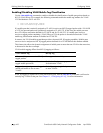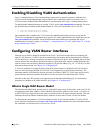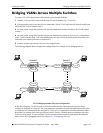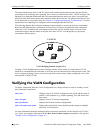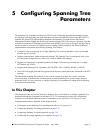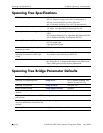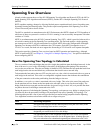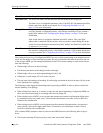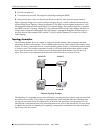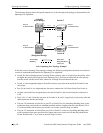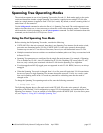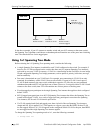
Spanning Tree Overview Configuring Spanning Tree Parameters
page 5-4 OmniSwitch 6600 Family Network Configuration Guide April 2006
Spanning Tree Overview
Alcatel switches support the use of the 802.1D Spanning Tree Algorithm and Protocol (STP), the 802.1w
Rapid Spanning Tree Algorithm and Protocol (RSTP), and the 802.1s Multiple Spanning Tree Protocol
(MSTP).
RSTP expedites topology changes by allowing blocked ports to transition directly into a forwarding state,
bypassing listening and learning states. This provides rapid reconfiguration of the Spanning Tree in the
event of a network path or device failure.
The 802.1w standard is an amendment to the 802.1D document, thus RSTP is based on STP. Regardless of
which one of these two protocols a switch or VLAN is running, it can successfully interoperate with other
switches or VLANs.
MSTP is an enhancement to the 802.1Q Common Spanning Tree (CST), which is provided when an Alca-
tel switch is running in the flat Spanning Tree operating mode. The flat mode applies a single spanning
tree instance across all VLAN port connections on a switch. MSTP allows the configuration of Multiple
Spanning Tree Instances (MSTIs) in addition to the CST instance. Each MSTI is mapped to a set of
VLANs. As a result, flat mode can now support the forwarding of VLAN traffic over separate data paths.
This section provides a Spanning Tree overview based on RSTP operation and terminology. Although
MSTP is based on RSTP, see Chapter 6, “Using 802.1s Multiple Spanning Tree,” for specific information
about configuring MSTP.
How the Spanning Tree Topology is Calculated
The tree consists of links and bridges that provide a single data path that spans the bridged network. At the
base of the tree is a root bridge. One bridge is elected by all the bridges participating in the network to
serve as the root of the tree. After the root bridge is identified, STP calculates the best path that leads from
each bridge back to the root and blocks any connections that would cause a network loop.
To determine the best path to the root, STP uses the path cost value, which is associated with every port on
each bridge in the network. This value is a configurable weighted measure that indicates the contribution
of the port connection to the entire path leading from the bridge to the root.
In addition, a root path cost value is associated with every bridge. This value is the sum of the path costs
for the port that receives frames on the best path to the root (this value is zero for the root bridge). The
bridge with the lowest root path cost becomes the designated bridge for the LAN, as it provides the short-
est path to the root for all bridges connected to the LAN.
During the process of calculating the Spanning Tree topology, each port on every bridge is assigned a port
role based on how the port and/or its bridge will participate in the active Spanning Tree topology. The
following table provides a list of port role types and the port and/or bridge properties that the Spanning
Tree Algorithm examines to determine which role to assign to the port.
Role Port/Bridge Properties
Root Port Port connection that provides the shortest path (lowest path cost value) to the
root. The root bridge does not have a root port.
Designated Port The designated bridge provides the LAN with the shortest path to the root. The
designated port connects the LAN to this bridge.
Backup Port Any operational port on the designated bridge that is not a root or designated
port. Provides a backup connection for the designated port. A backup port can
only exist when there are redundant designated port connections to the LAN.



